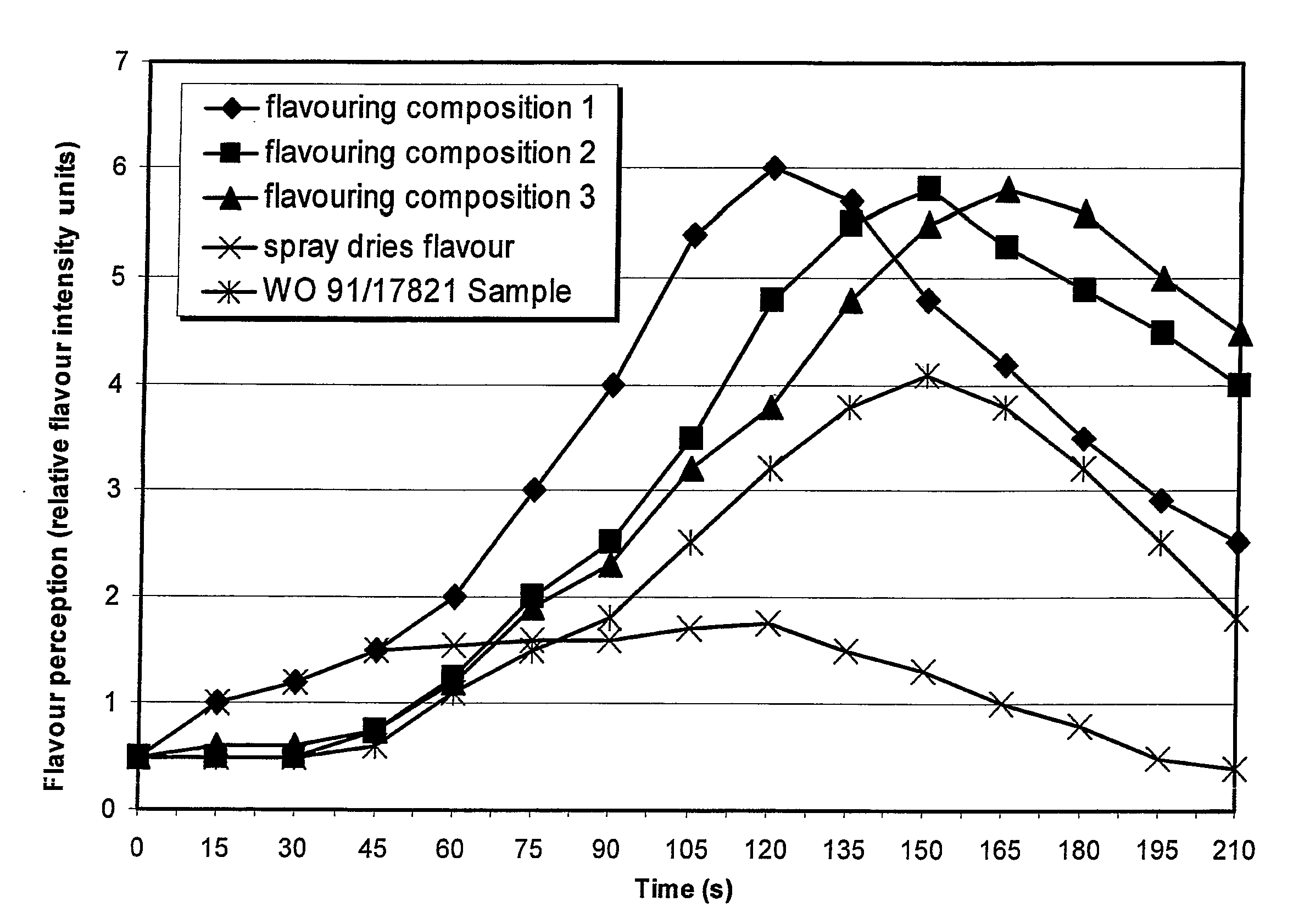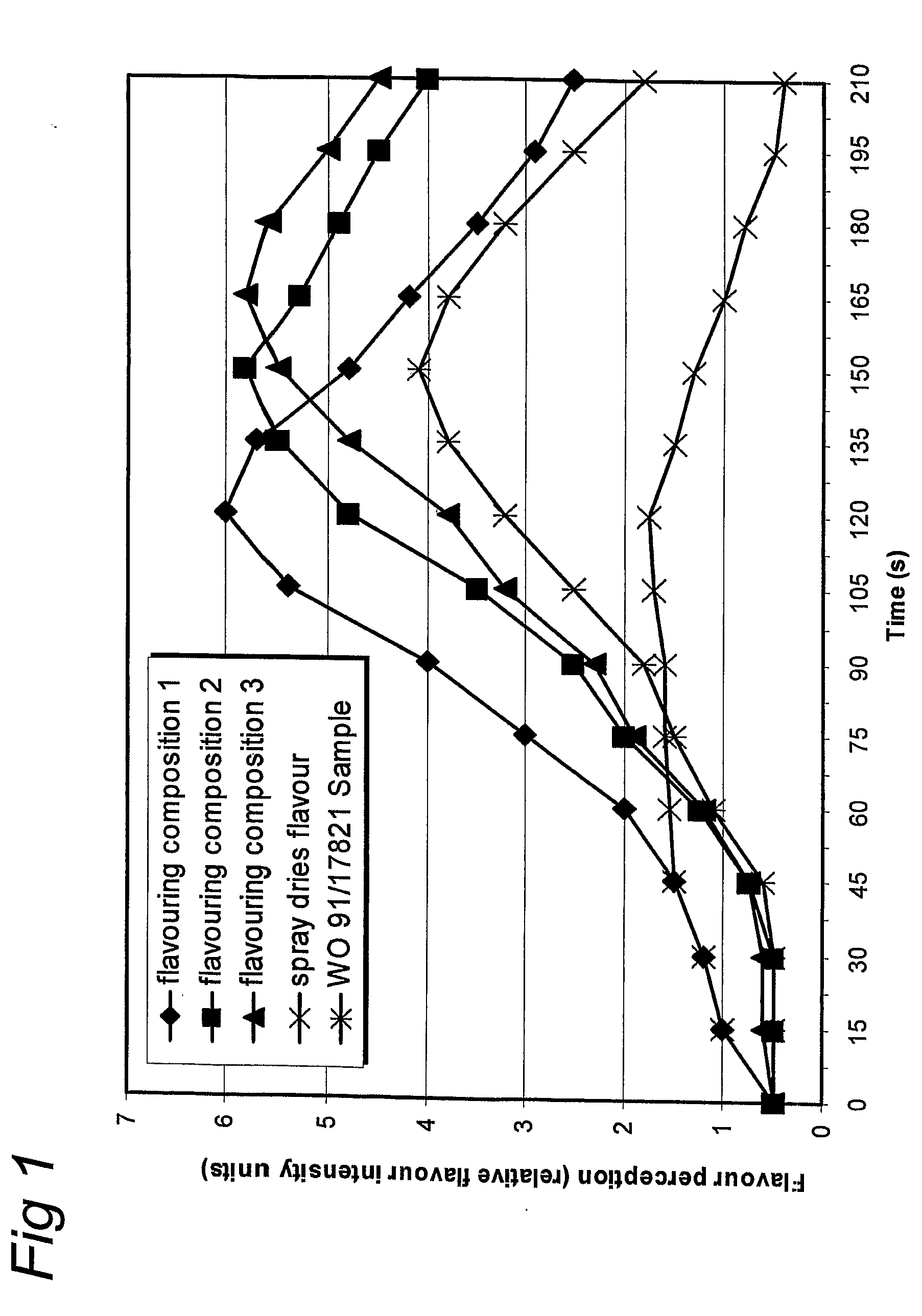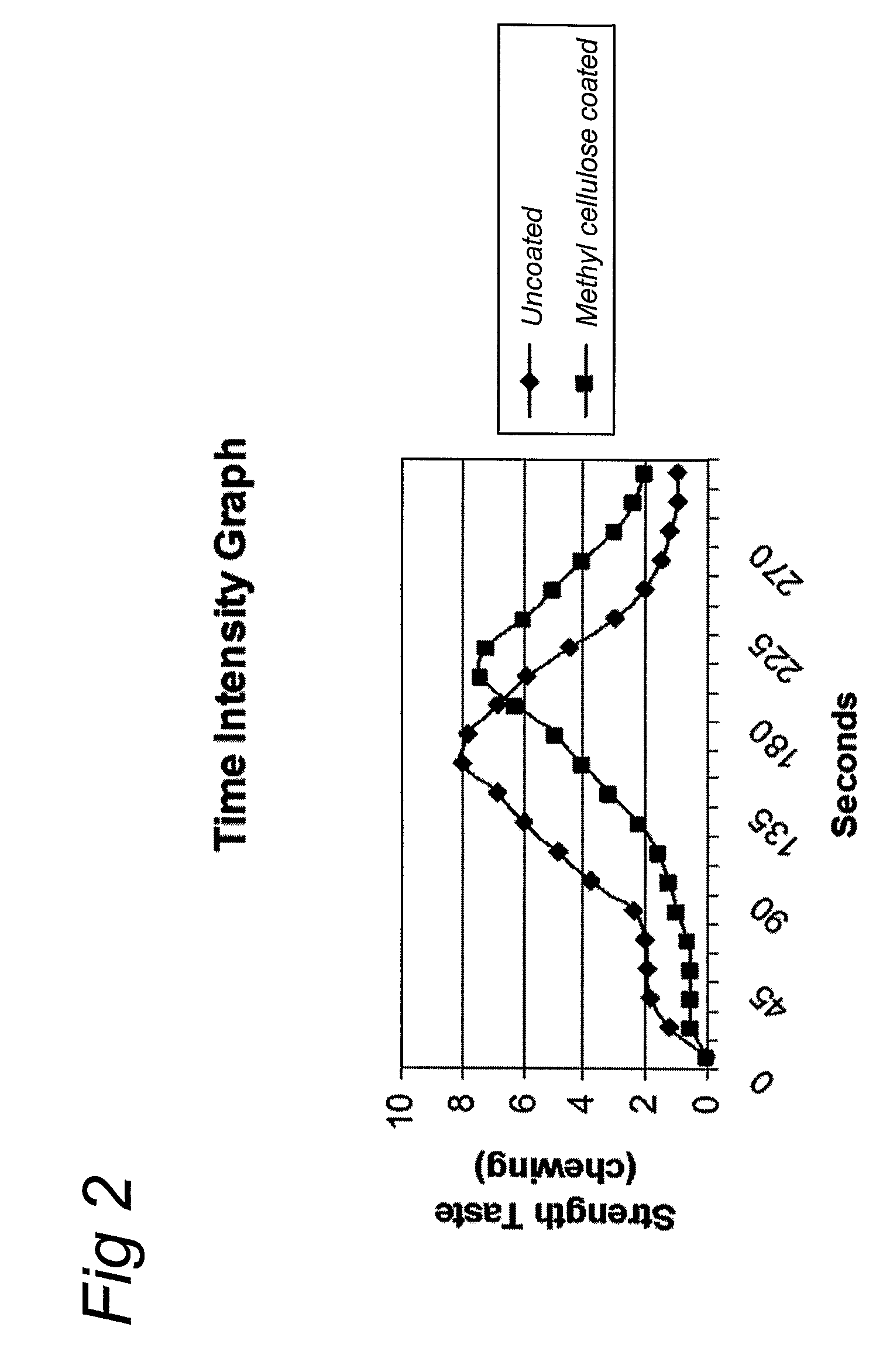Particulate Flavoring Composition
a flavoring composition and particle technology, applied in the field of flavoring, can solve the problems of hygroscopic water-soluble carbohydrates, inability to reliably hold the encapsulate for long periods, and serious problems in the food industry, and achieve excellent controllable delayed release characteristics and sufficient protection
- Summary
- Abstract
- Description
- Claims
- Application Information
AI Technical Summary
Benefits of technology
Problems solved by technology
Method used
Image
Examples
example 1
[0065] Different particulate flavouring compositions were prepared according to the present invention. The amounts of the different components that were used to prepare the emulsions are shown in table 1.
TABLE 1emulsions for preparing particulate flavouring compositionsPreparation123gelatine 240 (g)300300300Xylitol (g)110110110gum Arabic (g)292929Water (g)880880880Menthol (g)120150260PO58 (g)32150600
[0066] Solutions are prepared by dispersing the first three components in water and mixing at 60° C. for 30 minutes. The menthol was dissolved in fully hydrogenated palm oil (type Admul P058 5Z03910 produced by Quest International B.V.) at 60° C. which is subsequently added to the aqueous dispersion and an emulsion is produced by homogenisation for 15 minutes at a temperature of 60° C. using an Ultra Turrax. This emulsion is then processed into round 1 cm frozen particles in a cryogenic pelletizer / breaker using liquid nitrogen. These deep frozen particles are subsequently loaded onto a...
example 2
[0071] The particulate flavouring composition 2, described in Table 2 of Example 1 was coated with methyl cellulose by means of fluid bed coating, using an aqueous solution of 4 wt. % methyl cellulose. The coated product so obtained contained about 3 wt. % of methyl cellulose.
[0072] The coated product as well as the particulate flavouring composition 2 of Example 1 were added to the chewing gum base described in Example 1 in an amount of 1.5 wt. %. The release characteristics of the chewing gum products so obtained were evaluated by a sensorial panel in the same way as described in Example 1. The results of the evaluation are depicted in FIG. 2. These results clearly show that application of the methyl cellulose coating layer delays flavour release without affecting the release profile.
PUM
| Property | Measurement | Unit |
|---|---|---|
| melting point | aaaaa | aaaaa |
| volume weighted average diameter | aaaaa | aaaaa |
| melting point | aaaaa | aaaaa |
Abstract
Description
Claims
Application Information
 Login to View More
Login to View More - R&D
- Intellectual Property
- Life Sciences
- Materials
- Tech Scout
- Unparalleled Data Quality
- Higher Quality Content
- 60% Fewer Hallucinations
Browse by: Latest US Patents, China's latest patents, Technical Efficacy Thesaurus, Application Domain, Technology Topic, Popular Technical Reports.
© 2025 PatSnap. All rights reserved.Legal|Privacy policy|Modern Slavery Act Transparency Statement|Sitemap|About US| Contact US: help@patsnap.com



